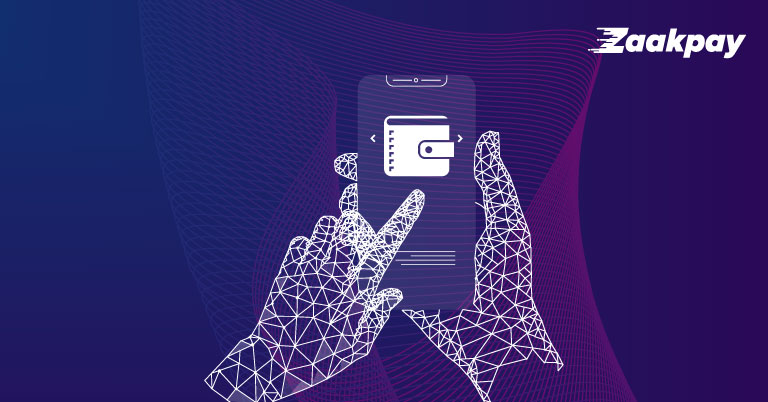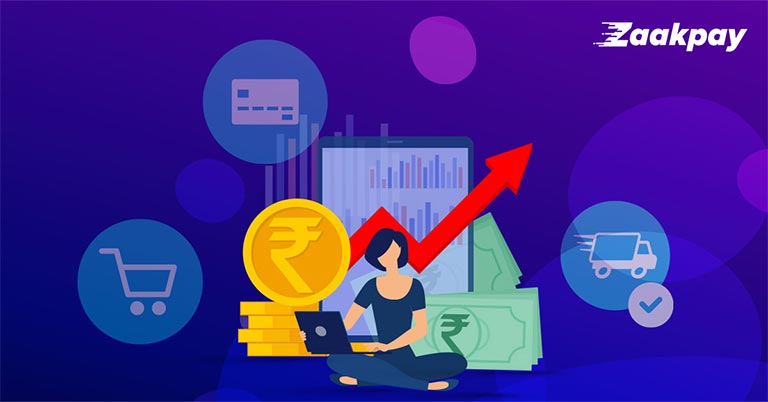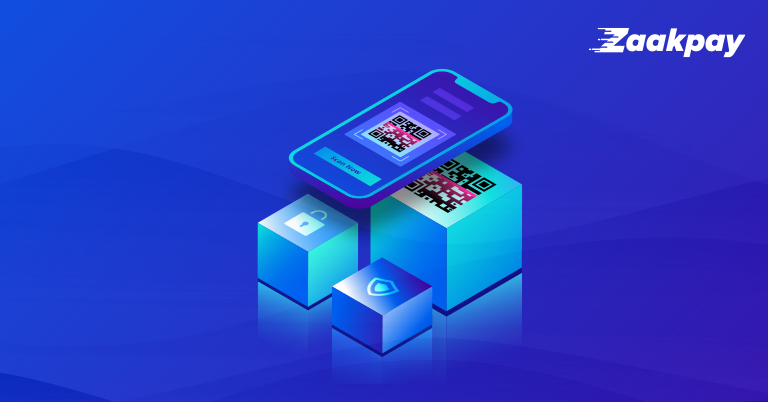Despite being predominantly a cash-based economy, India is moving towards a financial revolution. Digital payments have been on a steady rise since the past decade, and they have generated a lot of interest and a strong user base. This is due to the increased use of smartphones, internet and mobile banking, and eCommerce in India. The cashless payment system witnessed a steady growth over the years following demonetization. The COVID-19 pandemic too fueled the advent of online transactions. In the last year alone, India has seen a rise of 78% in online payments.
The digital payment system in India is only expected to see an upward trend in the coming years. According to various reports, the online payment industry is estimated to grow up to US$700 billion by the end of 2022. The country is expanding the digital payment landscape by advancing in terms of blockchain, cloud-based payments, and other payment facilities powered by IoT, ML, and AI and a lot of payment gateways are adapting to the trend of digitization.
Future Technologies of Digital Payments
A lot of technologies make digital payments possible. These primarily include machine learning and artificial intelligence. As customers continue making online payments, technology can study these experiences and improve them over time. Let’s take a look at some of the technologies that are expected to lead the digital payments solution in India in the coming years.
Use of biometrics
Biometric verification is a way to identify the user on a device where it evaluates one or more biological features such as retina patterns, fingerprint, signatures, and voice recognition. Using these biometrics, digital payments can be authenticated securely and instantly without the customer having to remember passwords and PINs. These digital payment solutions also offer user transaction verification and tokenization without the user’s involvement. There is also a highly reduced chance of fraud because of more robust authentication.
AI/ML and Data Science
Artificial intelligence and machine learning have started influencing our day-to-day life. It is no surprise that these technologies have also made their way into digital payments. AI helps create a secure and simple way to trade and transact.
Following are some innovations that rely on AI and ML for online payment solutions.
- Face recognition- This AI-dependent online payment system makes use of facial recognition to help customers make online payments. This eliminates the hassle of cards and PINs, ultimately saving time for both the customer and the business.
- Banking chatbots- AI-based banking chatbots provide customers by managing accounts and making payments in a matter of seconds. This is alongside managing queries too. AI chatbots have reduced a lot of pressure on banking systems that previously had to recruit, train and maintain a lot of executives to manage the banking system. Customers do not even realize they are talking to a chatbot and not a human representative.
- Fraud detection- Digital payment gateway like Zaakpay have increased their cybersecurity to ensure fraudulent transactions are at bay. However, depending on human intervention for payment authentication is difficult. This is where AI steps in. Along with proper human input, task-specific AI identifies and prevents fraud and attacks, providing a greater level of security for online payment systems.
Contactless payments
Contactless payment allows customers to pay for various goods and services using debit and credit cards using the RFID technology, also known as chip cards, without the need to swipe, enter a PIN, or sign. When the payment system asks the customer to transact, he/she brings the card close to the payment terminal. The payment information is electronically transmitted from the chip on the card. When the terminal accepts the payment, it signals with a beep, greenlights, or a check. In most cases, there is a set transaction limit on the payment, generally to avoid a fraudulent transaction.
Moving Towards a Cashless Society
It is safe to say that India is moving towards a cashless society, especially with the convenience allowed by the cashless payment system. India is not unfamiliar with digital payments. However, the challenges in India are different, such as lack of awareness and distrust. The government has taken various measures to increase the use of online transactions, which has led to drawing a plan to shift users to a truly paperless economy.
From cards to codes
The journey for a cashless society started with the advent of plastic money in the form of debit cards, credit cards, etc. These were, and still are, convenient. Users have to take out their card, swipe in the machine, and enter a PIN. As much hassle-free as the process is, it has certain drawbacks. Sometimes users lose their cards or forget their PINs. Not to mention the security lapses in card payments, ranging from cloning of cards to selling cardholder data on the internet. These were considered hiccups on the way to a truly cashless society, which led to the innovation of even advanced and safer modes of online payment.
United Payment Interface (UPI): UPI is a code-based cashless payment solution that is preferred by millions of Indians due to its ease and speed. The usage of UPI transactions has increased manifold due to advantages like zero service costs and no minimum amount. The major perk with its usage is that the payment can be processed simply on a smartphone, making it the go-to digital payment system for the majority of users.
Increasing Demand for Mobile Point of Sale
A Mobile Point of Sale system performs the same function as that of a conventional register, with the added benefit of portability. It can be plugged into a tablet or a smartphone. A reason for its popularity is that it allows you to run your business from any part of the world. This is groundbreaking for people who do not run their businesses from brick-and-mortar stores, for example, vendors selling goods at street fairs, farmer markets, etc. Mobile PoS gives these businesses the liberty to perform transactions from wherever they are.
Smart Speaker payments
Voice payments are the big thing in digital payments. Driven by AI, these speakers, which are already linked to the customer’s bank accounts, can simply transfer money to the intended beneficiary with a simple voice command. The advantages of it are obvious. The customer saves time and does not even have to lift a finger to complete the transaction. However, smart speaker payments are yet to reach groundbreaking status, owing to skepticism and distrust among the general population.
Dominance of mobile wallets
Mobile wallets are a popular online payment solution. At the end of the last decade, around 2.8 billion mobile wallets were in use. Customers are not only using mobile wallets to make more payments; they also use multiple wallets. For merchants across the globe, accepting payments via mobile wallets means they can increase the customer base as the customer will have the option to choose the preferred method. The number of mobile wallet platforms transacting more than $1 billion annually is expected to increase by 27% in the coming years.
Conclusion
In India, digital payments are here to stay. Customers do not have to worry about banking hours, devices, and cards. With more users warming up and merchants getting aligned, digital payments are opening up new avenues for digital commerce combined with various technologies that constantly revolutionize the digital payment system.
Follow Us on:

